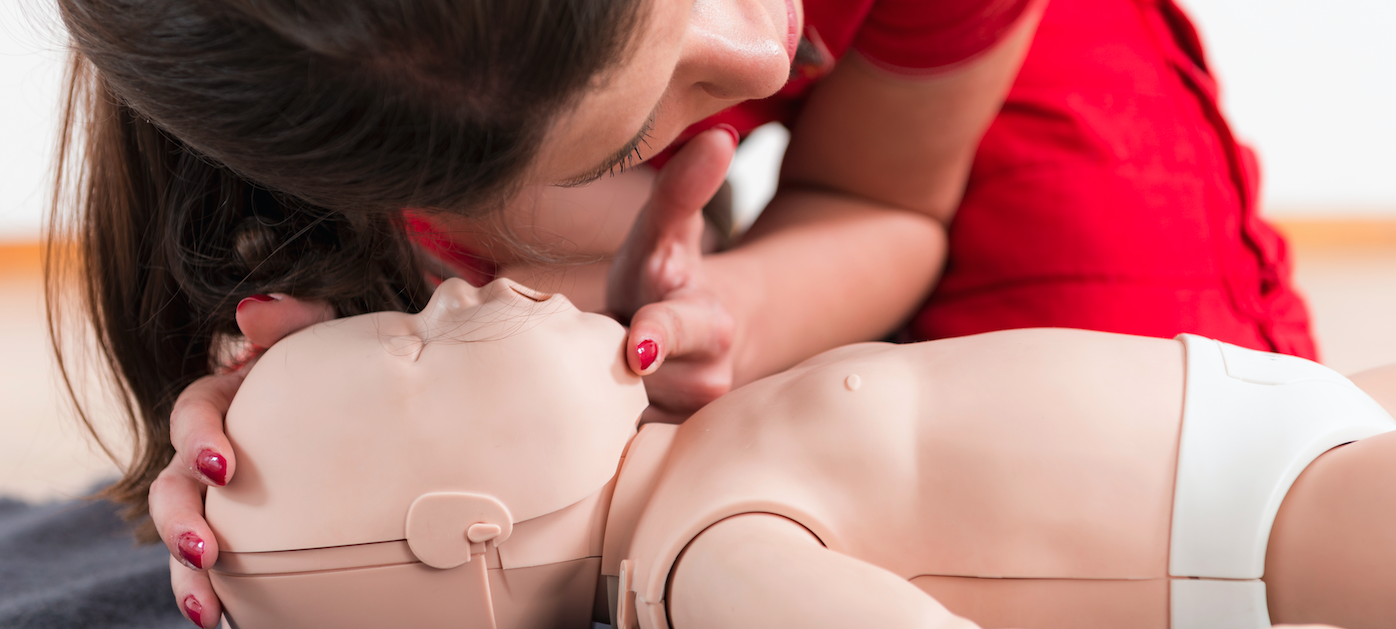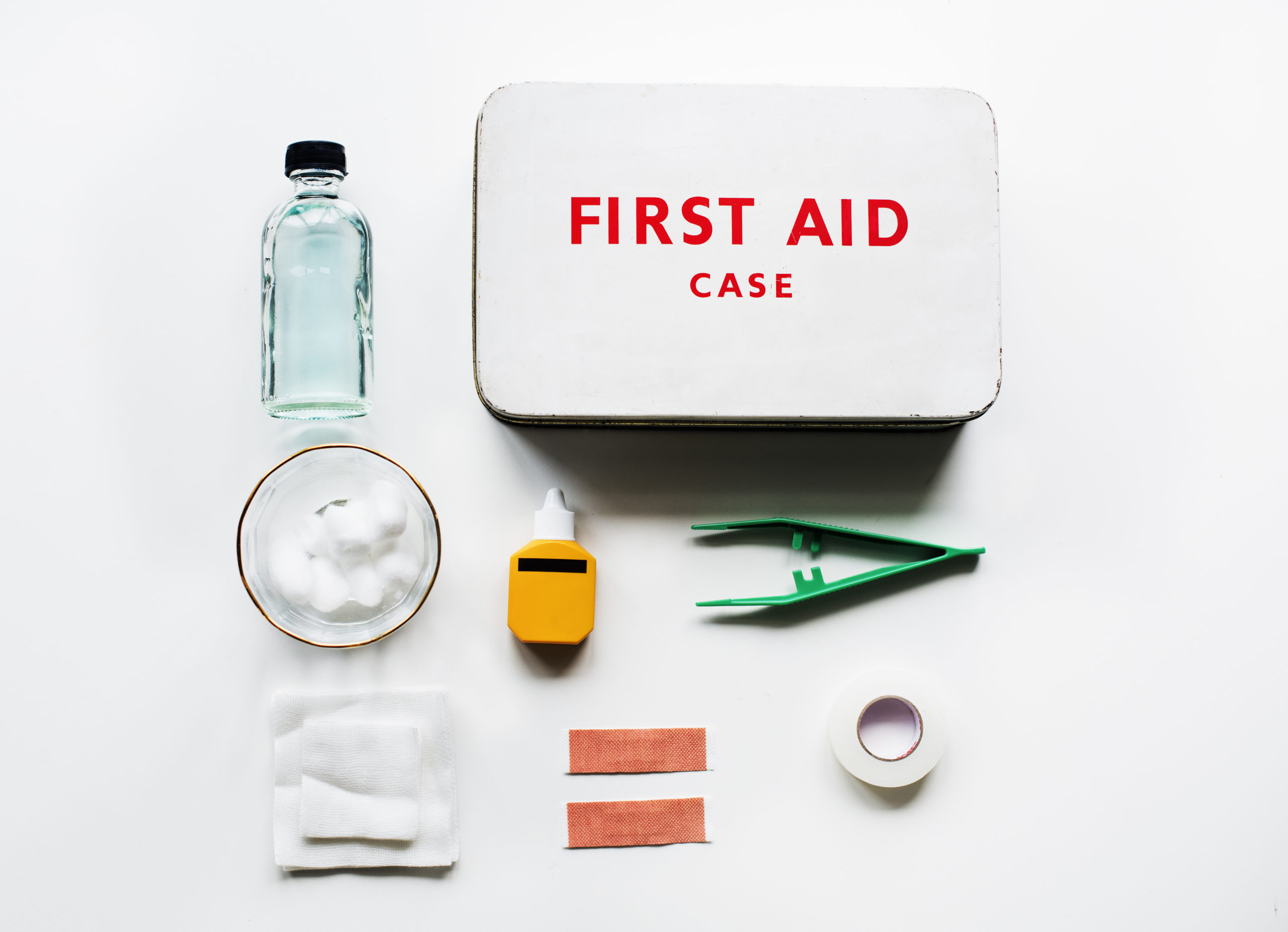What you need in your first aid kits will depend on what industry you are in, how many employees you have and various over factors. In all types of industries, there is a risk of injuries or illness, and although these should always be carefully prevented, sometimes accidents do happen and that’s why it’s so important to be fully prepared.
Your first aid kit should always she fully stocked and easily accessible onsite, at all times. You should also make sure you have the right products inside to cover any potential injury or illness that occurs.
First aid arrangements are legally required in every business. The Health and Safety (First-Aid) regulations 1981 requires all companies to provide suitable and appropriate first aid apparatus so that employees can be given help in an emergency.

How many first aid kits do you need?
The number of first aid kits you will need, will be dependent on your first aid risk assessment discoveries. The risk assessment should be carried out by the employer or a professional and allow you to determine the possibility of risks.
Tips to help you determine the number of kits needed:
- The number of employees on the premises – the more employees you have, the more first aid kits will be required.
- The number and size of your working floors – If you are in a large office with several floors or rooms, you should have at least own first aid kit in every place of work in your building. Where you have large floors, you should have one first aid kit on each end of the room. If you have a complex layout, then you will need to carefully place first aid kits where they are visible.
- The level of risk work activities poses – a small office provides a smaller risk than a manufacturing premise, for instance. You’ll most likely only need one for each floor in a small office, but in an environment with dangerous vehicles or machinery, you’ll require more than one throughout the floor even if it’s small.
This is only a rough guide; your risk assessment will determine exactly how many you need. However, it’s always better to have one extra, so you have always got yourself covered.
What size First Aid kit do you need?
There are various sizes available of first aid kits to accommodate different sizes and needs of businesses. Depending on how many people work in your business and the level of risk the environment poses, you will need a particular sized first aid kit.
Low risk business: Offices, libraries, schools and supermarkets are example of low risk environments where there is a lack of danger. Although there may be a lack of physical danger, emergencies can happen and that’s why a first aid kit should still be easily accessible.
Small Size kit: less than 25 employees
Medium size kit: 25-100 employees.
1 large kit per 100 employees: over 100 employees.
Each kit will have the same amount of equipment to the number of employees it’s designed for.
High risk business: engineering, warehousing, laboratories or any business that have hazardous or danger working environments.
Small size kit: less than 5 employees
Medium size kit: 5-25 employees
1 large kit per 25 employees: more than 25 employees.
Again, each kit should contain the amount of items need to accommodate the number of employees you have.
You will always need to ensure that the kit you have in place complies with British Standards BS 8599-1. All items in your first aid kit should contain necessary equipment that this safe and hygienic.
Where should you put your first aid kit?
There isn’t a ‘compulsory’ location for your first aid kits, as this will be depend on the layout, size and risks of your working environment. If you find that certain areas of your business has a higher injury/illness risk, you should keep the first aid kits closer and in easily accessible areas.
First aid kits should be clearly visible and have a ‘First Aid Kit’ sign nearby to help direct people in an emergency. All first aid kits should be kept on a countertop, mounted on a wall, or kept in a cabinet where they are protected and easy to locate. However, do bear in mind, kits mounted on a wall can create difficulty as the box is not portable and it can be difficult to take certain items to the injured individual if they can’t go independently.
Also remember to keep the first aid boxes away from areas that create debris, dust or high-temperature climates. Simply keep the kit in a room temperature environment that is out of the way and visible, this is all that you need.
What should you have inside your first aid kit?
Now this is one of the most important questions to ask. Although there is no compulsory list, you have to be considerate of the potential injuries and illnesses that you will encounter in your business.
Typically, when you buy a first aid kit from a reputable seller that complies with British Standards, it will already contain everything you need.
However, you may want to add other items, depending on the results of your risk assessment. For example if your business is at high risk of burns or chemical exposure, you may want to include burn relief and ointments.
It is advised that you have these items in your first aid box:
- Leaflet on general first aid guidance.
- Sterile eye pad
- Individually wrapped, sterile waterproof plasters of assorted sizes (hypoallergenic if required.)
- Safety pins
- Bandage/wound dressing
- Face mask (for CPR)
- Alcohol-free cleansing wipes
- Cream for insect bites and stings
- Antiseptic cream
- Scissors
- Distilled water for cleaning
Caution: Items in your first aid kit may have expiration dates so do check them regularly. You must dispose of and replace any items that are out of date.
This is all the key information you need on first aid kits.
All you need to do is follow the guidance provide in this blog and you’re all set. Just remember to follow your risk assessments and prepare for any susceptible injuries or illness associated with your line of work.



